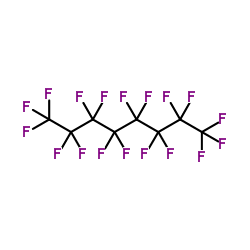Possible mechanism of perfluorooctane sulfonate and perfluorooctanoate on the release of calcium ion from calcium stores in primary cultures of rat hippocampal neurons.
Xiaohui Liu, Yihe Jin, Wei Liu, Faqi Wang, Shuang Hao
文献索引:Toxicol. In Vitro 25(7) , 1294-301, (2011)
全文:HTML全文
摘要
Perfluorooctane sulfonate (PFOS) and perfluorooctanoate (PFOA) are anthropogenic compounds manufactured since the 1950s and are distributed worldwide. Now, the pollutants are being challenged by entering into the brain and the toxic effect on the central nervous system due to calcium disorder, mainly through channels on cell membrane. However, little is known about the role of calcium store in PFOS- and PFOA-evoked abnormal calcium increase. In the present study, PFOA and PFOS were measured in primary cultures of rat hippocampal neurons by LC/MS/MS analysis. Flow cytometry was used to examine altered calcium patterns in neurons labeled with fluo-3/AM and to disclose the mechanism by which PFOS and PFOA induced calcium increase in cultured neurons. The results indicate that both PFOS and PFOA can accumulate in cultured neurons and elevate calcium concentrations via release of intracellular calcium stores. Furthermore, inositol 1,4,5-trisphosphate receptors (IP(3)Rs) and ryanodine receptors (RyRs) were found to take part in PFOS or PFOA inducing calcium release from calcium stores. IP(3)Rs seem to serve a predominant role in PFOS-induced calcium release. Calcium release from intracellular stores may partially account for the perturbation of calcium homeostasis caused by PFOS or PFOA.Copyright © 2011 Elsevier Ltd. All rights reserved.
相关化合物
| 结构式 | 名称/CAS号 | 分子式 | 全部文献 |
|---|---|---|---|
 |
全氟辛烷
CAS:307-34-6 |
C8F18 |
|
Interaction between perfluorcarbon liquid and heavy silicone...
2012-07-01 [Curr. Eye Res. 37(7) , 563-6, (2012)] |
|
Colored perfluorocarbon liquids as novel intraoperative tool...
2012-05-01 [Graefes Arch. Clin. Exp. Ophthalmol. 250(5) , 653-9, (2012)] |
|
Reversible and irreversible sorption of perfluorinated compo...
2016-02-01 [Chemosphere 144 , 1747-53, (2015)] |
|
An ensemble and single-molecule fluorescence microscopy inve...
2011-01-01 [Spectrochim. Acta. A. Mol. Biomol. Spectrosc. 78(1) , 216-23, (2011)] |
|
Short-term intraocular tamponade with perfluorocarbon heavy ...
2011-05-01 [Br. J. Ophthalmol. 95(5) , 694-8, (2011)] |